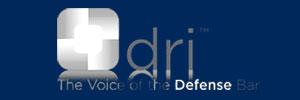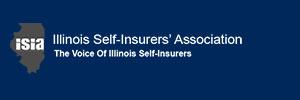Back to Basics: Workers’ Compensation Fraud in Illinois
March 2024
Whether you are new to the industry or a seasoned pro, chances are a file has come across your desk that has left you wondering whether a claim qualifies as fraud. In those situations, how do you distinguish when someone is malingering or symptom magnifying versus committing real fraud?
First, consider the problem as a whole. It is estimated that nationally only 1% to 2% of all workers’ compensation cases are fraudulent (1). While that percentage is arguably small, the dollar value is high. Workers’ compensation fraud results in $34 billion in losses, divided between claimants, medical providers, and premiums (2).
Fraud is a misrepresentation or concealment with reference to some fact material to a transaction that is made with knowledge of its falsity or in reckless disregard of its truth or falsity and with the intent to deceive another and that is reasonably relied on by the other who is injured thereby (3). Proving that the fraud was committed intentionally is a very high bar and can make these cases challenging.
Section 25.5 of the Illinois Workers’ Compensation Act defines and governs workers' compensation fraud and provides for penalties (4). For purposes of this article, the author will specifically discuss the manner in which the Act defines fraud committed by petitioners, but please note that any company, corporation, insurance carrier, or healthcare provider can also be found to engage in fraudulent activities (5).
Section 25.5 of the Act states that it is unlawful for any person to intentionally present or cause to be presented any false or fraudulent claim for the payment of any workers' compensation benefit; intentionally make or cause to be made any false or fraudulent material statement or material representation for the purpose of obtaining any workers' compensation benefit; intentionally make or cause to be made any false or fraudulent material statement to the Department of Insurance's fraud unit in the course of an investigation of fraud, or intentionally assist, abet, solicit, or conspire with any person, to commit any of these aforementioned acts.
Section 25.5 of the Act lays out the various sentencing provisions if a fraud conviction occurs, ranging from misdemeanors for minor offenses, up to felonies with 15-year prison sentences.
Examples of workers’ compensation fraud include:
- Intentionally and knowingly filing a false claim for an injury that did not occur at work or has absolutely no relation to the job (“faking an injury”).
- Intentionally and knowingly making a false statement during the claim investigation process.
- Intentionally and knowingly misrepresenting the severity of an injury.
- Intentionally and knowingly misrepresenting previous trauma or treatment.
- Intentionally and knowingly misrepresenting one’s job status, e.g. collecting TTD while working.
If one believes fraud has occurred, a referral needs to be made to the Department of Insurance’s Workers’ Compensation Fraud Unit. Referrals can be made by email at DOI.WorkCompFraud@illinois.gov or by phone to 877-923-8648. Anyone can make a referral, but it is recommended that before doing so you consult with your organization/employer/insured because there is a high likelihood statements, depositions, etc. will later be needed if the Fraud Unit accepts your allegations.
Once a referral is made, the Fraud Unit will investigate. It has discretion to determine whether a case is worthy to refer to a prosecutor and that prosecutor then has discretion to decide whether to file criminal charges.
Fraud complaints made to the Fraud Unit over the past decade have ranged from as low as 30 per year to as high as 300 per year, but the numbers are trending down (6). In 2022, only 30 new fraud complaints were sent to the Fraud Unit. Including backlogged cases, last year a total of 59 cases were investigated by the Fraud Unit. Of those 59, just six were referred for criminal prosecution. Of those six, prosecutors elected to accept only two for prosecution. Those trials are pending. As these numbers suggest, when a case is referred to the Fraud Unit, the chances of the referral leading to a prosecution are very low. Most likely, this is due to the very high burden required to prove intent, in addition to limited resources at the Fraud Unit and prosecutors’ offices.
Nonetheless, fraud needs to be taken seriously. The ability for victims to refer cases to the Fraud Unit is a valuable tool for keeping the workers’ compensation system fair. If you feel you have a case worthy of referral to the Fraud Unit, may it be suggested that you consider whether the evidence can prove intentional deceit by the wrongdoer and that you have enough evidence to give to the Fraud Unit to warrant investigation and prosecution.
This author suggests that cases where you feel or think someone is trying to take advantage, will likely not meet the burden to prove fraud. On the other hand, in situations where you have hard evidence to back your belief, your chances of success increase. For example, if you paid TTD to a claimant, but surveillance and banking records later show that individual was working for another employer while also collecting TTD, your evidence is strong. Likewise, if you have security camera video and eyewitnesses to rebut the petitioner’s alleged accident or mechanism of injury, there may be merit to your position.
There are, of course, a myriad of ways fraud can be committed, but the takeaway is you will need strong evidence to prove intent. Conduct a thorough investigation. Build proof. Give the investigators and prosecutors good facts and let Section 25.5 of the Illinois Workers’ Compensation Act go to work for you.
Footnotes:
- 1. Rohrlich, Ted and Evelyn Larrubia, "Anti-Fraud Drive Proves Costly for Employees." Los Angeles Times. Aug. 7, 2000 ↩
- 2. [NAIC (2023, June 13). INSURANCE FRAUD. NAIC.org. Retrieved August 8, 2023, from https://content.naic.org/cipr-topics/insurance-fraud]↩
- 3. Merriam-Webster.com. Retrieved August 9, 2023, from https://www.merriam-webster.com/legal↩
- 4. 820 ILCS 305/25.5, see: https://www.ilga.gov/legislation/ilcs/documents/082003050K25.5.htm ↩
- 5. For example, intentionally making or causing to be made any false or fraudulent material statement or material representation for the purpose of denying any workers' compensation benefit or to prevent an injured worker from making a legitimate claim for any workers' compensation benefits; intentionally preparing or providing an invalid, false, or counterfeit certificate of insurance as proof of workers' compensation insurance; and intentionally presenting a bill or statement for the payment for medical services that were not provided. ↩
- 6. 2022 Annual Report. Illinois Department of Insurance Workers' Compensation Fraud and Compliance Unit. https://doi.org/2022↩










